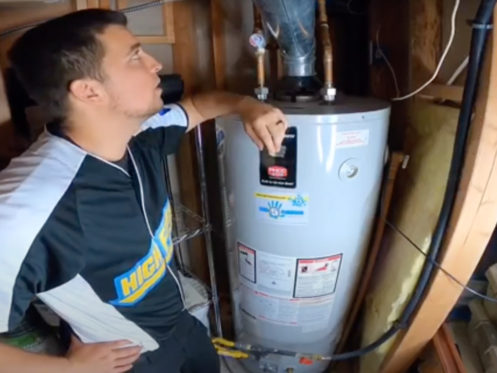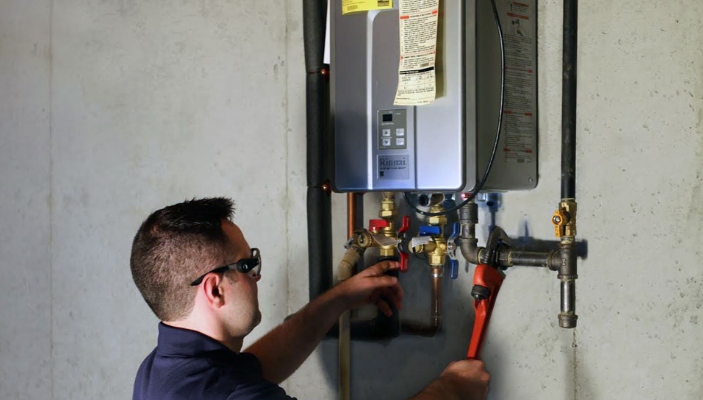How do you feel when it comes to How to Maintain a Hot Water Heater in a Few Simple Steps?

Hot water is important for daily convenience, whether it's for a revitalizing shower or washing dishes. To guarantee your hot water system runs effectively and lasts much longer, routine upkeep is crucial. This article supplies practical suggestions and insights on just how to maintain your home's warm water system to avoid disturbances and pricey repair work.
Intro
Preserving your home's hot water system could seem daunting, yet with a few simple steps, you can ensure it runs smoothly for several years to find. This guide covers whatever from understanding your warm water system to DIY upkeep suggestions and recognizing when to contact specialist help.
Relevance of Maintaining Your Warm Water System
Routine upkeep not only expands the life expectancy of your warm water system however additionally ensures it runs effectively. Disregarding maintenance can cause decreased effectiveness, higher energy costs, and even early failure of the system.
Indications Your Hot Water System Requirements Upkeep
Understanding when your warm water system needs interest can prevent major problems. Keep an eye out for indications such as irregular water temperature, odd sounds from the heater, or corroded water.
Flushing the Water Heater
Purging your hot water heater removes debris buildup, boosting effectiveness and prolonging its life.
Monitoring and Replacing Anode Rods
Anode poles protect against corrosion inside the storage tank. Evaluating and replacing them when worn is critical.
Complex Problems Calling For Expert Help
Examples consist of major leakages, electrical issues, or if your hot water heater is regularly underperforming.
Regular Professional Upkeep Benefits
Expert upkeep can include complete inspections, tune-ups, and making sure conformity with safety and security criteria.
Inspecting and Adjusting Temperature Settings
Changing the temperature level setups ensures optimal performance and safety.
DIY Tips for Maintenance
You can do a number of upkeep jobs on your own to maintain your warm water system in leading problem.
Looking for Leakages
Regularly inspect pipes and connections for leaks, as these can result in water damage and higher bills.
Understanding Your Warm Water System
Prior to diving right into upkeep jobs, it's handy to recognize the standard parts of your hot water system. Generally, this includes the water heater itself, pipes, anode rods, and temperature controls.
Month-to-month Upkeep Tasks
Normal month-to-month checks can assist capture minor problems before they rise.
Examining Stress Alleviation Valves
Checking the pressure relief valve ensures it operates appropriately and stops excessive pressure buildup.
Insulating Pipelines
Protecting hot water pipes reduces heat loss and can conserve power.
When to Call an Expert
While DIY upkeep is helpful, some problems require professional expertise.
Verdict
Normal maintenance of your home's hot water system is crucial for performance, durability, and cost financial savings. By complying with these tips and understanding when to seek specialist assistance, you can guarantee a dependable supply of warm water without unforeseen disruptions.
How to Maintain an Instant Hot Water Heater
Before tinkering with your hot water heater, make sure that it’s not powered on. You also have to turn off the main circuit breaker and shut off the main gas line to prevent accidents. Also turn off the water valves connected to your unit to prevent water from flowing into and out of the appliance. 2. When you’re done, you have to detach the purge valves’ caps. These look like the letter “T†and are situated on either side of the water valves. Doing so will release any pressure that has accumulated inside the valves while at the same time avoid hot water from shooting out and burning your skin. 3. When the purge valves’ caps are removed, you have to connect your hosing lines to the valves. Your unit should have come with three hoses but if it didn’t, you can purchase these things from any hardware or home repair shops. You can also get them from retail stores that sell water heating systems. Read the user’s manual and follow it to complete this task properly. When the hosing lines are connected, open the purge port’s valves. 4. You should never use harsh chemical cleaners or solutions when cleaning your unit. Make use of white vinegar instead. It should be undiluted and you’ll probably use about 2 gallons. 5. Now flush your water heater. This task should probably take about 40 minutes. We can’t give you specific directions for this because the procedure is carried out depending on the type, model and brand of your heater. With that being said, refer to the user’s manual. 6. When you’re done draining the unit, you have to turn off the purge port valves again. Remove the hosing lines that you earlier installed on each of the water valves. Put the valve caps (purge port) back in their respective places and be very careful so as not to damage the rubber discs that are found inside these caps. 7. Now that everything’s back in place, check your user’s manual again to find out how to reactivate your water heating system. 8. Once it is working, turn one of your hot water faucets on just to let air pass through the heater’s water supply pipes. Leave the tap on until water flows smoothly out of it. https://www.orrplumbing.com/blog/2014/september/how-to-maintain-an-instant-hot-water-heater/

We had been introduced to that article on What Kind of Maintenance Do Water Heaters Need? through an associate on a different site. Loved our blog posting? Please share it. Help others find it. I take joy in reading our article about What Kind of Maintenance Do Water Heaters Need?.
Check Us Out